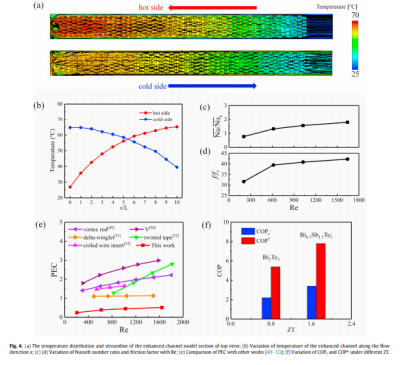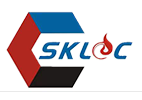In the past two years, the COVID-19 pandemic has been widespread across the world, resulting in over 2.5 million deaths. How to effectively eliminate the virus has become a hot spot. Compared with other methods, thermal sterilization is advantageous for its rapid effect and greater safety. The traditional thermal sterilization method, however, uses heated wire to sterilize, resulting in high-temperature air discharged after heating and disinfection, which causes people’s discomfort.
On May 8, 2021, Materials Today Physics published an article online entitled "An integrated thermoelectric heating-cooling system for air disinfection—A simulation study " coauthored by Prof. Yang Nuo's research team from Huazhong University of Science and Technology (HUST) and Prof. Hao Qing from the University of Arizona.
In this study, an integrated air sterilization system combining thermoelectric heating and cooling is introduced. Since the semiconductor thermoelectric sheet has a hot and a cold side, by which the functions of high-temperature sterilization and low-temperature cooling could be realized at the same time. The system is U-shaped with an air inlet at one end and an air outlet at the other, with the thermoelectric equipment embedded in the middle, and multiple thermoelectric sheets within serve to realize the function of gradual heating and cooling. Meanwhile, the fins on both sides of the thermoelectric sheet can enhance the heat exchange capability. The air flowing into the system first flows through the cooling fin on the high-temperature side of the thermoelectric sheet for high-temperature sterilization; then, it goes through the low-temperature side to cool down.

In addition, various performances of the newly proposed system are discussed through computational fluid dynamics simulation. The results show that the air temperature in the system can reach up to 65°C or more by using general commercial thermoelectric sheets. The filter at the end of the heating zone can capture viruses in the air and inactivate them in a large proportion through high-temperature heating for a certain period of time. The advantage of this system lies in a temperature reduction to 40°C with the air passing through the cooling side, making the air output after disinfection more comfortable. At the same time, the system features a high energy utilization rate with a COP reaching 5.4. Bi0.5Sb1.5Te3, a material with better thermoelectric properties, will be even more beneficial to improve the system performance. The heat-end disinfection temperature can reach up to 80°C, while keeping the outlet temperature at 40°C, resulting in a COP value of 7.8 for the entire system.
The thermoelectric integrated system proposed in this article, capable of achieving high-temperature disinfection and air cooling at the same time, serves to improve the overall energy efficiency, and is of huge application potential in air disinfection.

Prof. Yang Nuo fromEPE and Prof. Hao Qing from the University of Arizona are the corresponding authors of the paper. With Ji Rencai, a postgraduate student of EPE as the first author, the paper has other co-authors including Pan Teng, Dr. Peng Guilong, and Ma Jianqiang.
Prof. Yang Nuo's research team was supported by the National Key R&D Program.
The system is protected by invention patents CN 202010695984.5 and CN 202011029176.1.
Paper Link: Materials Today Physics 19 (2021) 100430




